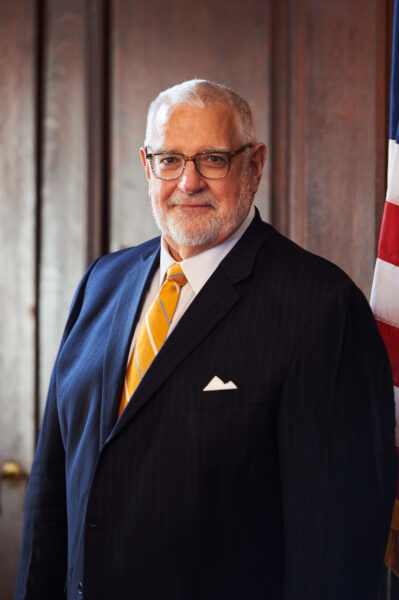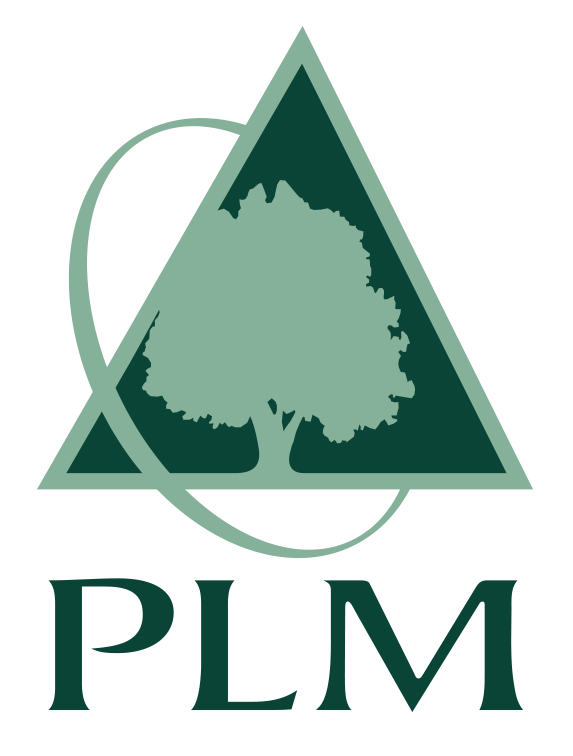
I frequently field inquiries from clients regarding “how we price” their business. I’d like to offer a few insights as to how we approach this topic.
Insurance is often described as a promise to perform. At its core, insurance is a contract between an individual or entity (the policyholder) and an insurance company (PLM). This contract is based on trust and the expectation that, in the event of a covered loss or occurrence, the insurance company will fulfill its promise to provide financial protection. There are many variables considered when developing a price in exchange for this promise. Perhaps the most difficult is determining the ultimate cost associated with the insurance policy you’re buying.
At policy inception, the insurance company knows, or can closely approximate, the operating expenses associated with our coverage offerings. However, the largest component of our cost structure is the actual loss sustained when—and if—it occurs. This component (loss sustained) might not be fully known until years after the policy expiration. This is particularly true with liability coverage (Auto and General Liability) and can be influenced by a number of factors beyond the fortuitous nature of losses.
One such example is delayed reporting, which in certain situations may be by design from plaintiff attorneys, with details not known by the insurance carrier (PLM) until just prior to the statute of limitations deadline. These deadlines vary by state and can be as long as 5 years.
Further, insurance companies whose client base tends to have a frequency of small losses, as opposed to the randomness of large occurrences, commonly use models to project expected loss costs. The challenge for us in the lumber niche is that our loss activity is typically more severe in nature than that of a frequency pattern, meaning that our clients (you) do not typically have lots of small losses. You, and by extension, we, experience losses less often, but they tend to be large. Equally challenging is that there is no pattern as to when these losses occur! For instance, in June we had a relatively quiet loss month on our property business. Conversely, in July we had 6 or 7 large losses that generated over $8M in the aggregate. (Note that we also experienced loss severity in Commercial Auto and General Liability).
Because losses are infrequent on most lines of coverage, your business is priced for the rare severe loss. This insight into the loss patterns of the lumber niche is almost a curse for PLM. Given this knowledge, we try to “build a bank” over time to fund for these losses. This concept is tough to explain to insureds and is also not understood by some insurance companies whose expertise is not in a severity niche.
We see clients go years without a loss until the unfortunate day when their multimillion dollar building burns to the ground, their load shifts on a truck and causes a severe accident, or their forklift operator runs over the delivery truck driver (or worse, spears them with a fork)!
So, how do we do this? That’s the tricky part.
In short, we need to determine what we believe to be your ultimate losses for the variety of lines of coverage we write.
Think of this: if the statute of limitations is 2 years in your state and 5 years in another, what level of uncertainty would you assign to your policy as opposed to the policy in the other state? Which policy should cost more? Yet, the policy for both covers the same 1-year period. Understanding this concept is critical, particularly if you are considering a self-insured retention (SIR) program.
So, what’s the thought process behind developing a price? I’ll focus here on General Liability and Commercial Auto and address the Property Line as a subsequent issue.
It’s important to understand that the coverage forms we use are all filed and approved by the various state insurance departments. The same can be said about our foundational rates (the starting point) we use for Auto and General Liability and our individual risk judgement modifiers.
Like all businesses, we need to understand the competitive landscape. There are several articles recently published in trade journals that indicate prices have finally peaked and are on the way down. This is particularly true when these articles are written by brokers!
I read the same magazines and trade journals, but they need to be interpreted more carefully. While the pace of price increases may be moderating, prices are still rising. For example, if a line of coverage was up 12% last year, it can be misleading to suggest prices are now falling. In reality, the price increase is still occurring, just not at the 12% level.
So, why are rates still increasing in the Auto and General Liability line? Well, I have spoken about this before; the reasons include but are not limited to:
- Legal system abuse
- Litigation funding
- Social inflation
- Jurors being more liberal in their assignment of values
- The cost of medical treatment
- The cost of vehicle repairs
- Courtroom delays
- Judicial hellholes
- The Reptilian theory
- …And the list goes on!
Among other things, these factors raise the cost of settlements—and when that happens, prices increase. Is your business any different?
So, how can you influence the pricing associated with your coverage? First and foremost is your attitude toward risk management. The days of an insured simply buying coverage for a hazardous exposure, rather than working with us to mitigate it, are behind us. It’s the quickest way to a non-renewal or a declination to quote a new account that I can think of.
In other words, the most significant step you can take to reduce or eliminate losses while receiving a better price is to take an active interest in your risk management program and set a leadership example for your team!
Safety needs to become a priority, and your actions to support this message are critical.
Ask yourself, are you making time for our loss control and business development representatives when they visit? Are you insisting that they walk your operation and point out any and all deficiencies? Are you responding immediately to those suggestions and recommendations following their review?
Remember, wood businesses like yours are the only types of accounts our people handle. They know what works and what does not in controlling loss exposure. We understand that complying with these suggestions and recommendations could cost you money and time in the short run, but believe me, not addressing the issues or temporarily postponing these considerations leaves you exposed to a much bigger cost in the long run—even when you have insurance.
Are you taking advantage of our training library? Do you provide only nominal compliance with your risk management programs, or do you actively engage with them? Are you willing to take the occasional harsh actions required to get your team to comply with those programs? This could require you to take unpleasant actions with regards to your team.
I remember an account having a terrible accident wherein the driver was a long-time employee who had been driving under the influence. The insured assigned the driver to an inside yard position. About 6 months later, the driver was back behind the wheel without addressing the original issue (drinking while driving). Unfortunately, the next loss that occurred was a terrible one. The insured ended up having to testify and admit they knowingly put someone with a drinking problem back on the road. Think of the reputational damage done! The verdict was in excess of the policy limits.
Are you spending the time and money to do the maintenance that must be done on your facility, equipment, vehicles, and machinery on a timely basis. Do you keep adequate records of these efforts, including who did what when? Are you using licensed electricians to do your electrical work, or do you think your years in the wood business qualify you to work on your electrical systems in a safe manner? If you are doing install sales, are you vetting the contractors, getting additional insured endorsements and certificates of insurance, or are you seeking the lowest price to maximize profitability?
I could go on, but I think you get the idea…. Talk to our loss control reps for further information.
Next, recognize that different types of wood operations (cabinet shop versus pallet manufacturer) and their location (urban/suburban/ rural) impact pricing. Insuring urban dealers with delivery exposures is more expensive than the same exposure in rural America.
Our base rate is calculated by a third-party organization based on industry averages. That base rate is modified, upward or downward, by PLM’s view of a client’s demonstrated commitment to risk management. This commitment is determined, in large part, by our loss control representative and our business development staff during physical visits, site inspections, and conversations with you and your people. They relay findings and their thoughts to our underwriters, and the underwriting team has a number of tools to modify the premium further, both positively and negatively, based on that feedback and the information provided on your application and the public research they do.
The first program they use is an “experience” rating program. If your account is of a certain size (x amount of premium or more than x vehicles), then the underwriter uses your last 3 or 5 years of losses and premiums (brought to current dollars or “developed”) to create a loss experience factor, either a debit (for poor experience) or a credit (for good experience) and apply it to the developed rate. Think of this as an experience rating factor similar to a Workers Compensation experience rating factor.
The second program is “schedule” rating. Here, the underwriter evaluates your business from 5 or 6 different perspectives and either applies credits or debits based on their evaluation. The deviation is limited to 25% either way in most states.
The developed rate (or base rate) is further modified by the amount of Liability coverage you are buying. The “increased limit factor” reflects whether you are buying $300K, $500K, or $1M dollars in Liability coverage; the more coverage, the higher the premium.
Once completed, the final rate is applied to the exposures used to rate the policy, sales for the General Liability, and vehicles on the Auto coverage.
Umbrella coverage is usually priced based on the premiums associated with the ‘underlying coverage’ or the cost of your General Liability and Auto coverage.
So, that is in short how we determine your premiums. In reality it’s much more complicated. But, to answer the underlying question or perhaps the real question of which I often get: “How I can influence the premium levels I am charged?”
First, your business and PLM is a relationship business. Let the loss control rep, business development staff, and underwriters get to know you and your team and vice versa. As indicated earlier, actively participate in your risk management program in an effort to reduce or eliminate your losses. Recognize that being loss-free in our niche (forestry, lumber, and building material dealers) is, while important, not unusual. Understand the nature of what we do. If you are paying us $100K in annual premium, (less than 10% of our insureds do) and you have a $1M loss, in the gross calculation, not adjusting for expenses, we would have to insure you for 10 years in order break even on your business, assuming you do not have another loss. After expenses, we need to insure you for 13.5 loss-free years to break even!
As we approach year end, I sincerely hope that both of our businesses thrive and meet or exceed our business objectives. I know we’re working diligently at PLM to make this happen; I’m sure your team is, as well. As always, feel free to reach out to any member of our PLM team, including myself, if you have any questions.
Thank you.



